#Mamluk Castle
Explore tagged Tumblr posts
Text



















Medjoola Date Day
Medjool Date Day takes place on February 4 yearly and serves the purpose of highlighting the benefits of the Medjool dates. Originally a Middle-Eastern fruit, Medjool dates made their way to the U.S in the 18th century, and since then, they have reigned in the hearts of the people. With a hint of caramel flavor, the dates are sweet, delicious, and one of the healthiest snacks on the market nowadays. They are also great for energy and can do wonders for people who are trying to cut down on the consumption of artificial sugar.
History of Medjoola Date Day
Medjool dates, like many other delicious fruits, have existed in this world for centuries. Though dates can be traced back to around 5000 to 6000 B.C., it took some time to reach different parts of the world. This was only possible with the technological evolution in transport, as the fruit was transported to different regions of the world. The Medjool dates, originally from Morocco, were brought to Nevada in 1927. From there, the plantation grew in abundance. Today, it is one of two date varieties grown in the U.S. And yes – people are really fond of this fruit.
Medjool dates were introduced into America by Walter Swingle in the 20th century. Swingle was assigned by the U.S government to identify some exotic crops around the globe, and after the researcher discovered dates, he transported them to America. During that time, however, not many were familiar with dates. This was, after all, a fruit they hadn’t heard of before. But as globalization happened and different cultures were brought to the forefront, people came to recognize dates for the delicious fruit they are. One of the main events that added to the popularity of dates in America was the annual date festival that started in 1921.
Today, dates are eaten by people of all ages, for their delicious taste as well as the numerous health benefits linked to them. A 2021 study reveals that Medjool dates are a good source of phenolic compounds.
Medjoola Date Day timeline
7000 B.C. The Fruit Delight
The Mehrgarh civilization cultivates dates in the Asian region.
3000 B.C. Reap What You Sow
Dates are grown in Mesopotamia.
2600 - 1900 B.C. Sweet Valley
The Indus Valley Civilization grows and consumes dates.
2019 Going Strong
Nine million tonnes of date fruit are produced.
Medjoola Date Day FAQs
What is the difference between Medjool dates and regular dates?
Medjool dates are more caramel-like in taste than regular dates (also called Deglet Noor).
Do dates make you fat?
Consuming a large number of dates can lead to weight gain.
Are Medjool dates healthier than other dates?
They may be healthier since Medjool dates contain more calcium.
Medjoola Date Day Activities
Buy some Medjool Dates
Share their benefits
Cook a dish
Honor the day by heading out to the store and buying some Medjool dates for yourself and your family. Don’t forget to serve them at the dinner table!
Since Medjool dates are good for health, it's only fair you share their benefits with other people too. Find some good articles and start posting on social media now!
Start the day well by cooking up some yummy date dishes in your kitchen. Some items you can attempt include date biscuits, puddings, and cakes.
5 Fun Facts About Dates
Dates are grown in California
Nickname of Medjool dates
Amount of fiber in dates
A perennial plant
Edibles made from dates
95% of the dates in the United States are grown in California.
It’s known as the ‘king of dates.’
It has 12% of the fiber amount our body needs daily.
The date palm takes four to five years to grow.
This includes syrup, alcohol, and vinegar.
Why We Love Medjoola Date Day
The fruit is highly nutritious
Its potential health benefits
It can be a substitute for sugar
Offering a significant amount of fiber and a variety of vitamins and minerals, Medjool dates are a rich source of healthful nutrients. It also contains more calcium than other common date varieties.
Protection from disease, indigestion, and cell damage are a few of the many health benefits of Medjool dates. And compared to figs and prunes, it has the highest antioxidant content.
Medjool dates are a rich source of natural sugar. The stone fruits are especially good for people monitoring their blood sugar because they have a low glycemic index and do not cause large increases in blood sugar.
Source
#Sticky Toffee Pudding#Mamluk Castle#Aqaba Fort#palm tree#Oropesa del Mar#Aqaba#Jordan#Miami Beach#Florida#Peñíscola#Spain#original photography#Carboneras#Sevilla#Lisabon#Lisbon#Portugal#España#Southern Europe#Medjoola Date Day#MedjoolaDateDay#4 February#travel#vacation#tourist attraction#USA#landmark#cityscape
3 notes
·
View notes
Text
Sultan Hakim, very nasty man! He’s sending his Mamlukes, he’s sending his Veteran Skirmishers… a very mean, nasty people the Sarranids. They’re sending them to Rindyar castle folks, and they’re building these big horrible ladders. But our beautiful Huscarls, we love them don’t we, we love our Huscarls, they’re going to send them right off that wall, they’re going to send them right back to Halmar. Even sleepy King Ragnar can see that!
102 notes
·
View notes
Text

🇮🇱⚔️🇵🇸 🚀🕌💥 🚨
ISRAELI OCCUPATION DAMAGES ANCIENT BARQUQ CASTLE IN KHAN YUNIS IN THE GAZA STRIP
📹 Scenes from the partial destruction of the ancient Barquq Castle located just outside the city of Khan Yunis, in the southern Gaza Strip, an ancient castle commissioned by Sultan Barquq.
Sultan Al-Malik Az-Zahir Sayf ad-Din Barquq, who ruled Egypt, Syria and Palestine from 1382-1389 as the first Sultan of the Circassian Mamluk Burji dynasty, commissioned the building of the Barquq Castle in 1387, assigning the task to Prince Yanus bin Abdullah al-Nurzi al-Dawdar for whom Khan Yunis was named after.
As Israel's ongoing war of genocide continues in the Gaza Strip, the Zionist occupation army has repeatedly destroyed ancient buildings, mosques, and churches across the Palestinian enclave, attempting to bury the history of Palestinian people alongside the civilian population.
#source1
#source2
#videosource
@WorkerSolidarityNews
#gaza strip#barquq castle#khan yunis#gaza#gaza war#gaza genocide#genocide#genocide in gaza#genocide of palestinians#israeli genocide#israeli war crimes#war crimes#crimes against humanity#palestine#palestine news#palestinians#israel#israeli occupation forces#israeli occupation#war#middle east#israel palestine conflict#politics#news#geopolitics#world news#global news#international news#breaking news#current events
28 notes
·
View notes
Photo


Why did the Templars just disappear in the early Middle Ages when they were so powerful?
They didn’t disappear. They were purged.
Most of them, anyway. Think Order 66 with swords.
But in order to understand why the Knights Templar were rounded up on Friday the 13th, 1307, you need to understand the context of the time in which it happened. Several factors contributed to the fall of the Templars, but the biggest one was this guy:

This is Philip IV, King of France, who ruled from 1285 until his death in 1314. He was the main architect in the fall of the Templars—but I’m getting ahead of myself.
The fall of the Knights Templar was set in motion when the Siege of Acre ended in 1291. When it fell to the Mamluk forces, it marked the loss of the entire Holy Land for Christendom. Acre had been the last piece of territory in the Holy Land held by Christians, so its fall was a grievous blow to Europe. It was an unmitigated disaster.
That’s where the Templars come in.
The Poor Fellow-Soldiers of Christ and the Temple of Solomon, or Templars for short, were originally established after the Crusaders captured Jerusalem at the end of the First Crusade. Their mission was to guide and protect pilgrims on the road to the holy city, as traveling in those days was fraught with peril. Those who joined the order in those early days took vows of poverty, chastity, piety and obedience, and their sigil even showed two men riding on the same horse to emphasize the Templars’ rejection of worldly goods.
Their self-imposed poverty didn’t last long, however. The Templars soon found a powerful advocate in a priest named Bernard of Clairvaux, who wielded a great of amount of influence in the Catholic Church. Clairvaux was so psyched about the Templars that he wrote books talking about how awesome they were, and this got everybody so pumped that in 1189 Pope Innocent II issued a papal bull saying that the Templars were exempted from paying taxes to anyone and didn’t have to obey local laws or customs. Instead, the Templars would answer only to the Pope himself. With this kind of public prestige, the Knights Templar soon became a popular charity: powerful lords and peasants alike donated their money, businesses, and even vast tracts of land to their cause, and sons from noble families from across Europe clamored to join them.
The Order quickly grew to be one of the most powerful military and financial institutions in Europe. They achieved famous victories such as the Battle of Montgisard in 1177, when some 500 Templar knights, backed up by a force of only several thousand foot soldiers, took on more than 26,000 enemy soldiers and absolutely crushed them. At the height of their power, the Templars were so rich and so powerful that even the crowned heads of Europe didn’t want to cross them. They controlled vast tracts of land throughout Europe and the Middle East, built massive cathedrals and castles, and were heavily involved in manufacturing as well as imports and exports, which is why they controlled a large fleet of trading ships and an even larger navy. They even set up an early kind of banking system and bought the whole freaking island of Cyprus.
A century after their founding, the Templars had become an independent state in all but name. Some historians have even called them the first true multinational corporation.
But when Acre fell and the Christians lost their grip on the Holy Land, the Templars lost their reason for being. Even as they grew in power they never neglected their original purpose of protecting pilgrims on the road to Jerusalem. But now that the Holy Land was lost, there weren’t any pilgrims to protect. The loss of the Holy Land also did a lot to diminish their reputation in the eyes of peasants and nobles alike, some of whom even blamed them for the catastrophe that Christendom had suffered. Public support for the order began to wane.
I mean, imagine that you’re a European king or feudal lord for a just second. The Templars have returned to Europe in the aftermath of the Third Crusade. Maybe they’re even travelling through your land. They’ve got a massive army, a massive navy, they don’t pay taxes, they’re richer than sin, and they can do pretty much whatever the hell they want because the laws literally don’t apply to them. The only person with the authority to command the Templars to do anything is the Pope, and Rome’s a long way away. If they decide to camp outside your castle and eat your food and drink your wine for three weeks as your “guests,” there’s nothing you can do about it. The idea of such a powerful force with so little accountability would have made you pretty uneasy. And the Templars themselves did little to relieve that anxiety. Many of them could, and did, take full advantage of their immunity to local laws and customs. The phrase “drunk as a Templar” became popular for a reason. To be sure, all this might have been more easily borne before the tide of the Crusades turned against the Crusaders, but now these jokers are walking around all lordly-wise and they’re not even winning anymore. All of this made a lot of very powerful people very nervous and increasingly disgruntled.
The point I’m trying to get at here is that the Templars were already having some serious PR issues even before Philip IV of France came along. Speaking of which…
See, Philip IV came to the French throne in 1285, and by 1303 he found himself and his kingdom deeply in debt after several failed—and very expensive—military campaigns. King Phil couldn’t afford to pay for all that on his own, so he went to the only people in Europe who could loan him the cash he needed. Those people—you guessed it—were the Templars, and he opened a huge tab with them that only got larger with time. And since King Philip seems to have had the financial acumen of a freaking goldfish, it didn’t take long for him to bring his kingdom into dire straits.
Now, Philip shared many of the same concerns about the Templars as his contemporaries, but he was probably much more worried about how much money he owed them. He may have even feared that the Knights would try to overthrow him if he wasn’t able to pay them back—and he damn sure wasn’t able to pay them back, not after borrowing such enormous sums.
In short, all of his biggest headaches seemed to trace back to the Templars. So what did he decide to do?
Get rid of the Templars, of course. By destroying them, he could eliminate a potential threat to his authority, wipe out his debt, and replenish his kingdom’s coffers all in one fell swoop.
But the Templars were traditionally protected by the Pope, so Philip IV’s first task was to remove their shield of papal authority. He did this by committing an act almost as audacious as his persecution of the Templars: stacking the papacy. Here is when we first see his Machiavellian brilliance on full display, for it was through this web of machinations—which included bribery, intimidation, and even violence—that he was able to get a puppet Pope, Clement V, installed in the Vatican. Clement issued the edicts, but it was Philip who pulled his strings. The King of France now had de facto control over the Catholic Church, and he used that control to have Pope Clement draw up a long list of charges against the Templars. These included blasphemy, heresy, sodomy, idol-worship and even witchcraft. He also accused the Templars of performing obscene rites in their initiation ceremonies, which was a clever charge to make because the Templars kept the details of those ceremonies a closely-guarded secret. No one knew what those ceremonies entailed, and the Templars were forbidden by oath from discussing them with outsiders, so they couldn’t really refute the charges against them.
Needless to say, few historians take these any of these accusations seriously. They were almost certainly fabrications concocted by the king himself.
Next, Philip lured all the Templar leaders to France on a pretext. He claimed that he wanted to discuss merging them with another knightly order, the Knights Hospitaller. All the most powerful Templars heeded his call and came to France. Many were accompanied by lavish baggage trains, which Philip was no doubt counting on. He then issued secret instructions to all his officials in every city and town where the Templars were staying. So did Pope Clement, at Philip’s behest.
In other words, these orders were sent out not just across France but across Europe, to every village, city, castle and keep with a Templar presence. It was received by princes, judges and civil officials in Spain, England, Germany and Cyprus. But no matter who they were sent to, the orders were the same:
At daybreak on Friday the 13th of October, 1307, every Templar in sight was to be arrested. Nothing was to be said to anyone about the raid before it happened, on pain of death if the plot was given away.
The plan went off like clockwork. It took the Templars completely by surprise. At dawn on the appointed day, they suddenly found themselves under attack all over the Continent. Some managed to escape, but many of them were rounded up and imprisoned or killed. Those unlucky enough to be captured, including their Grand Master Jacques du Molay, were tortured until they confessed to the trumped-up charges that had been leveled against them. Many of them died from this terrible treatment or were burned at the stake, and Pope Clement officially dissolved the Knights Templar several years later. Du Molay himself was eventually burned at the stake along with many of his comrades.
But the immense wealth that Philip had planned on seizing never materialized. The vast treasure the Templars brought with them to France was never recovered, and no one knows what happened to it. We do know that a Templar fleet of more than twenty vessels was anchored in the French city of La Rochelle before the purge and vanished overnight shortly after it began, but no one knows where it went. Some believe that the Templars used those ships smuggle their treasure out of France just in the nick of time, but there’s no way to know for certain. And even if they did, the treasure is just as lost to us today as it would have been had it stayed in France.
Nor does anyone know for certain what happened to the Templars who were lucky enough to survive the purge. Some of them no doubt faded into the background or lived the rest of their lives in hiding. Others may have vanished into the ranks of the Knights Hospitaller. A lucky few might have been able to bribe or plead enough for clemency if they were caught.
There are stories, though. One of the most persistent legends says that some of the remaining Templars managed to make it to Scotland, where they later fought for Robert the Bruce at the Battle of Bannockburn in 1314. The Templars had strong connections with Scotland that dated back for more than a century, and Robert had little reason to honor the papal decree to purge the Templars. The pope had excommunicated him and his entire country after he murdered one of his rivals, John Comyn, inside a church on February 10, 1306, and now the King of Scots was fighting a brutal war against the English. If the Templars did indeed show up on his doorstep, he would have been happy to have such experienced and fearsome warriors on his side. But to date, no solid evidence has been found to give this theory credence.
Another legend—and my personal favorite—claims that some of the Templars fled to the Swiss Alps. In fact, there are stories in Switzerland even today of “armed white knights” who helped the Swiss crush an invasion by Duke Leopold of Hapsburg in 1315, just a few years after the purge. Could these “white knights” have been Templars? If they were, they picked a perfect spot. The Swiss Alps are formidable even with today’s technology, so they would have been an ideal location to hide in. They would also have been a great place for the Templars to put their expertise to good use. In fact, some claim that these fugitive Templars trained the very first Swiss pikemen, who went on to win renown as the most fearsome fighters in Europe. It is, after all, fairly remarkable how quickly the Swiss, who had been simple subsistence farmers for centuries before Duke Leopold’s invasion, became some of the finest warriors of their day. The story even goes so far as to claim that the Templars also taught the Swiss their secrets of banking and finance, and that those same secrets eventually evolved into the unique banking system still used in Switzerland today.
But by far the most fantastical—and least likely—story says that a group of Templars fled to North America, and that they used old maritime routes first pioneered by the Vikings centuries earlier to island-hop across the North Atlantic until they landed somewhere along the upper northeastern seaboard. Few historians take this assertion seriously, however, as there is almost no archaeological evidence to back it up.
Ultimately, as with the final destination of their fabled wealth, the true fate of the last Templars will likely never be known.

#philp iv#kemetic dreams#templars#knight templar#switzerland#north america#duke leopold#english#duke#john comyn#scotland#europeans#european history#philip iv
51 notes
·
View notes
Note
Writer asks: 7, 9, 10, 12, 13, 20, 26, 28, 30
Dude, that's a lot! I'm going to have to answer these questions as efficiently as possible... a real challenge for your local Robin...
7 is answered here!
9: Favourite OC?
aughhhh... I love so many of my ocs so very dearly and it changes all the time. At the moment it's Rudy (the Party Clown).
10: OC you most struggled to make?
SIX. I am STILL struggling to figure out Six. He's a vortex of "who are you???" in my brain. I know I need him in the story and I can describe his effect on the others but I don't KNOW HIM. He keeps CHANGING on me. Even the picrews are out of date.
12: Which story took the most research?
Caravaggio story (based on the mamluks in 1250s Egypt and Mongolia) took the most difficult research. There's not a lot of resources on day-to-day life in 1250s Egypt. But the story that took the most time in research has been Clown World, for which I have read three full books and a bajillion articles and watched a documentary and a few short clown performances.
13. Which story has the most lore?
Probably Clown World...? But Strange Redemption comes really close. If you don't count details about characters that will be written into the story, Clown World definitely has the most lore. LOTS of worldbuilding, LOTS of backstories that will never be fully explained in-universe.
20: What story are you the proudest of? Why?
The Strange Redemption of Thaddeus Thawne. It's... deeply personal... it's cathartic for me and for others... from what I'm told, it often does what it's intended to do, which is let people experience Thad's perspective but not get lost in it, to get them thinking about healing and trauma and what it is to be alive... I'm proud of the story for what it is, even though I can see all the flaws. I'm proud of its slow, careful pacing and the way I write Thad's mind.
Also, Strange Redemption is my longest work and my first public work, AND I managed to publish it weekly and biweekly for two straight years while in college. And I'm sticking with it now even though it's like pulling teeth at the moment. I'm proud of myself for the writing of it.
26: What are your favourite books?
In no particular order, Howl's Moving Castle and Archer's Goon by Diana Wynne Jones; The Graveyard Book by Neil Gaiman; Watership Down by Richard Adams; All Systems Red and the rest of the Murderbot Diaries by Martha Wells; Going Postal by Terry Pratchett; and The Goblin Emperor by Katherine Addison.
28: Favourite songs at the moment?
Famous Last Words by MCR (hard rock, but it means a lot to me (it's about brotherly love!) and it's stuck in my head); Something Good by Alt-J (sweetly-sung melody about distracting oneself with self-destructive behaviors); Life Itself by Glass Animals (I associate it with Clown World!); and The Ballad of Bull Ramos by The Mountain Goats (from a concept album about pro wrestling, this song is about what the narrator imagines as the best possible old age... it's so strangely sweet...... it's about staying tough but having the freedom to help out his friends.....)
30: How are you doing? <3
Good! <3 I'm visiting a friend right now, and it's been lovely. I'm tired right now, but so content.
Overall, though, to be honest, I'm increasingly anxious about the future... it's my senior year of college, and I don't know what I'm doing after that. God will provide, but it's exceedingly nervewracking not to know how. So I'm doing good, objectively! I have an overabundance of good things in my life and even a good amount of security and stability! But I think maybe the stability itself is making me fall apart a bit 😭
9 notes
·
View notes
Text
Palmyra! Looking out (from somewhere around the tetrapylon I think? It's been a long time since I've been) through to the remains of the Baths of Diocletian, and up to the Mamluk castle atop the hill.
These colours are so vivid, they gave me the sense-memory of the sand under my feet

Ruins study. Small study of landscape with architecture.
13K notes
·
View notes
Text
Events 9.3 (before 1930)
36 BC – In the Battle of Naulochus, Marcus Vipsanius Agrippa, admiral of Octavian, defeats Sextus Pompey, son of Pompey, thus ending Pompeian resistance to the Second Triumvirate. 301 – San Marino, one of the smallest nations in the world and the world's oldest republic still in existence, is founded by Saint Marinus. 590 – Consecration of Pope Gregory I (Gregory the Great). 673 – King Wamba of the Visigoths puts down a revolt by Hilderic, governor of Nîmes (France) and rival for the throne. 863 – Major Byzantine victory at the Battle of Lalakaon against an Arab raid. 1189 – Richard I of England (a.k.a. Richard "the Lionheart") is crowned at Westminster. 1260 – The Mamluks defeat the Mongols at the Battle of Ain Jalut in Palestine, marking their first decisive defeat and the point of maximum expansion of the Mongol Empire. 1335 – At the congress of Visegrád Charles I of Hungary mediates a reconciliation between two neighboring monarchs, John of Bohemia and Casimir III of Poland. 1411 – The Treaty of Selymbria is concluded between the Ottoman Empire and the Republic of Venice. 1650 – Victory over the royalists in the Battle of Dunbar opens the way to Edinburgh for the New Model Army in the Third English Civil War. 1651 – The Battle of Worcester is the last significant action in the Wars of the Three Kingdoms. 1658 – The death of Oliver Cromwell; Richard Cromwell becomes Lord Protector of England. 1666 – The Royal Exchange burns down in the Great Fire of London. 1777 – American Revolutionary War: During the Battle of Cooch's Bridge, the Flag of the United States is flown in battle for the first time. 1783 – American Revolutionary War: The war ends with the signing of the Treaty of Paris by the United States and the Kingdom of Great Britain. 1798 – The week long battle of St. George's Caye begins between Spain and Britain off the coast of Belize. 1812 – Twenty-four settlers are killed in the Pigeon Roost Massacre in Indiana. 1838 – Future abolitionist Frederick Douglass escapes from slavery. 1843 – King Otto of Greece is forced to grant a constitution following an uprising in Athens. 1855 – American Indian Wars: In Nebraska, 700 soldiers under United States General William S. Harney avenge the Grattan massacre by attacking a Sioux village and killing 100 men, women and children. 1861 – American Civil War: Confederate General Leonidas Polk invades neutral Kentucky, prompting the state legislature to ask for Union assistance. 1870 – Franco-Prussian War: The Siege of Metz begins, resulting in a decisive Prussian victory on October 23. 1875 – The first official game of polo is played in Argentina after being introduced by British ranchers. 1878 – Over 640 die when the crowded pleasure boat Princess Alice collides with the Bywell Castle in the River Thames. 1879 – Siege of the British Residency in Kabul: British envoy Sir Louis Cavagnari and 72 men of the Guides are massacred by Afghan troops while defending the British Residency in Kabul. Their heroism and loyalty became famous and revered throughout the British Empire. 1895 – John Brallier becomes the first openly paid professional American football player, when he was paid US$10 by David Berry, to play for the Latrobe Athletic Association in a 12–0 win over the Jeanette Athletic Association. 1911 – A fire that started on Fraser's Million Dollar Pier destroys six to eight square blocks of Ocean Park, California. 1914 – William, Prince of Albania leaves the country after just six months due to opposition to his rule. 1914 – French composer Albéric Magnard is killed defending his estate against invading German soldiers. 1914 – World War I: Start of the Battle of Grand Couronné, a German assault against French positions on high ground near the city of Nancy. 1916 – World War I: Leefe Robinson destroys the German airship Schütte-Lanz SL 11 over Cuffley, north of London; the first German airship to be shot down on British soil.
0 notes
Text
Unveiling Aqaba: Where History Meets Breathtaking Beauty in 2024
Immerse yourself in the captivating Jordanian destination of Aqaba, a city boasting a rich tapestry of history, dazzling natural beauty, and vibrant culture. Nestled at the southernmost tip of Jordan, Aqaba beckons visitors with its bustling port, palm-lined streets, and authentic bazaars. This haven also boasts UNESCO World Heritage Sites that promise an unforgettable exploration.

Unearthing Aqaba's Enduring Legacy
Evidence of settlements in Aqaba dates back to 4000 BC, solidifying its position as a crucial port city. Throughout history, it has been under the rule of various empires, including the Greeks, Romans, and Byzantines. The city transitioned hands to Muslim armies in the 7th century and Crusaders in the 10th century. Saladin, the founder of the Ayyubid dynasty, captured the area in the 12th century.
Following the Ottoman conquest in 1516, Aqaba remained under their control until World War I. The opening of the Suez Canal in 1869 and the Hejaz Railway in 1908 played a role in the city's gradual shift from a strategic center to a thriving tourism hub. Today, Aqaba is renowned for its world-class diving industry, proximity to Wadi Rum, and the awe-inspiring Ancient City of Petra.
Curating an Authentic Aqaba Experience
Aqaba offers a captivating blend of historical landmarks, vibrant shops, delectable restaurants, and charming cafes. With its year-round sunshine, the city provides a haven for those seeking warmth. Summer temperatures can reach 40°C (104°F) between May and October, while November to April offers cooler weather.
A Journey Through Time: Historical Gems
* Aqaba Castle: Dominating the port area, this formidable structure was originally built by the Mamluks and further fortified during the Ottoman era. Apart from its defensive role, the castle served as a caravanserai (inn) for Muslim pilgrims. Explore the partially-intact stone structure adorned with inscriptions and relish the captivating sea views.
* The Ancient City of Petra: Approximately 130 kilometers from Aqaba Airport lies Petra, the famed "Rose City" named for its rose-tinted sandstone architecture. Built as the capital of the Nabataean Kingdom, this ancient city was strategically carved into a narrow gorge, offering both defensive and commercial advantages. Petra's dramatic setting and magnificent structures earned it a place as one of the New Seven Wonders of the World in 2007.
* Aqaba Church: Believed to be one of the oldest churches globally, this Christian structure dates back to the 3rd century. Though significantly damaged by an earthquake in the 4th century, the basilica-shaped structure remained partially intact, preserved by wind-blown sand until its rediscovery in 1998.
* The Old City (Early Islamic Aqaba): Unearthed in 1989, this area showcases the remnants of the early Islamic period. Originally surrounded by twenty-four towers and gates on all four sides, the western gate provided access to the Gulf of Aqaba.
Aqaba's Enchanting Natural Wonders
* Wadi Rum: Just 70 kilometers from Aqaba Airport lies Wadi Rum, a captivating desert landscape widely regarded as one of the most stunning in the world. The area's dramatic beauty has graced the silver screen in numerous films, including "Lawrence of Arabia," "Dune," and several Star Wars installments. Explore this UNESCO World Heritage Site via camel or jeep tours, while adhering to conservation measures.
* Diving in the Red Sea: The Gulf of Aqaba, an extension of the Red Sea, boasts some of the world's most esteemed diving sites. Dive into a kaleidoscope of coral reefs teeming with marine life. Numerous Aqaba dive centers provide tours and diving courses for all experience levels.
Delve Deeper: Aqaba's Museums
Unveil Aqaba's fascinating history through its museums:
* Aqaba Heritage Museum: Located on the Great Arab Revolution Square, this museum showcases exhibits on Aqaba's history, culture, and lifestyle.
* Aqaba Archaeological Museum
* Jordan Maritime Museum
Ready to embark on your Aqaba adventure?
Visit Aqaba with Wonders Travel and Tourism, your trusted partner in crafting exceptional Jordanian experiences. Contact us today to start planning your unforgettable journey!
0 notes
Text
Knights Hospitaller

Dear Caroline:
Besides the article you mention here (still online, and yes, it is great!), the Order of Knights of the Hospital of Saint John of Jerusalem is really interesting. They started life as the poor brother, the Pepsi to the Templar's Coke, if you will, but pretty soon got up to speed - the most famous of the Crusader castles, Krak des Chevaliers, was theirs, and soon after that they started a spree of last-stand desperate battles in which they acted as bulwarks of Christianity against the relentless Mamluk and Ottoman tide: Acre (1291), Rhodes (1522) and Malta, where they staid for over two centuries, resisted a number of great sieges and flourished as a International Christian Pirate State mirroring the Barbary states on the opposite shore and faith of the Mediterranean. Their back was finally broken by Napoleon on his way to Egypt, including a tragicomic interlude in which tsar Paul I become their Grand Master and protector of sorts. After that they have become a faded relic of their former self, a glorified meeting club and charity for aristocratic Catholics, which in some sense brings to mind Effective Altruism a bit. I can imagine a mutual association between them that could be very symbiotic, and Will McAskill would look great in those robes.
(Incidentally, they have great fortresses in other areas, besides the Holy Land. The picture and link below is of the Castle of La Muela here in Spain...)
0 notes
Text
see the alternating black-and-white stripes pattern, especially in the tower on the right? that's called ablaq, and it's a technique of alternating dark and light stones on walls. it's widespread in the areas making up the historical bilad al-sham and northern egypt, but can be found in other parts of the middle east and north africa as well. the exact origin's a bit murky, but it's thought that alternating different types of stones kept buildings stable enough to withstand earthquakes. the word itself is thought to originate from yemeni arabic from the word "balaq" - limestone - and went on to be used by arabs to describe alternating light and dark stripes, like on bees.
it was utilized as a feature in islamic architecture under several caliphates (like in the dome of the rock in jerusalem, which was built during the 7th century), but was especially prominent under the mamluks (like in the madrasa of umm al-sultan shaban in cairo, built in the 14th century). it can be found in both secular architecture (like beiteddine palace in lebanon) and architecture of other religions (like like the monastery of qozhaya and magen avraham synagogue in beirut) as well.
ablaq reached post-antiquity europe in three different places - historical al-andalus (like in the old mosque of cordoba), the balkans via the ottomans (like sofia synagogue in bulgaria), and italy via both (earlier) trade and (later) the crusades (like in this church). another italian church built using ablaq is monza cathedral. from italy, it reached further into catholic europe, such as in malbork castle in poland and speyer cathedral in germany.

Siena Cathedral, Tuscany, Italy
(Raimond Spekking)
#italy#architecture#info#worship#christian#ablaq outside of the ''main area'' like in na isnt as consistent in its origin/presence iirc#most is ottoman some isnt#also repost bc i found better links
132 notes
·
View notes
Text
Experience the Beauty of Jordan with Jordan Tours and Travel
n Jordan, you may go on hikes through gorges and down spectacular waterfalls amid the unspoiled wilderness, climb cliffs and mountains to reach breathtaking vistas, ride along the paths taken by kings and emperors throughout history, and so much more.

Amman – Um El-Jimal – Desert Castles
Pick up from Amman to Umm al-Jimal with the help of Jordan tours and travel, a stunning village and ancient archaeological site that rises out of Jordan's northern basalt plain, which is home to nearly 2000 years of intriguing history and culture, including Nabataean, Roman, Byzantine, Umayyad, Mamluk, and Ottoman.
Aqaba – Petra – Aqaba
Drive towards the Nabatean Red-Rose City of Petra, the newest wonder of the world, after picking up passengers in Aqaba. Petra was constructed out of stone more than 2000 years ago in order to control the trade routes of ancient Arabia. See its dams, waterways, and towns. The major entry to the city is the siq, a three-quarters-mile (1.2 kilometre) long, extremely congested roadway. The "Khazneh" or treasury is at the end of the siq. Go back to Aqaba.
Amman – Madaba – Mt. Nebo – Amman
Pickup from Amman, Moses' final resting place on Mount Nebo. See other mosaics depicting various animals and individuals that may be found inside the Mount Nebo cathedral while taking in the view of the Holy Land. Next, take a transfer to Madaba to see the gigantic Madaba Mosaic Map at the Church of St. George, which is now a Greek Orthodox Basilica. It depicts Jerusalem, Jericho, Bethlehem, and other sacred locations in exquisite detail. Get back to Amman through Jordan private tours and travel.
Amman city tour – Desert Castles
Take up Amman City, a historical location in the heart of Amman; visit the churches and mosques, traditional souks, coffee shops, and restaurants to sample local cuisine through Jordan tours and travel. Amman is also the historic city once known as Rabbath Ammon, followed by "Philadelphia," where you may visit the Roman Theater and the Citadel. Travel to see the stunning examples of early Islamic art and architecture known as the Desert Castles, which are situated east of Amman.
Book your trip now.
0 notes
Text

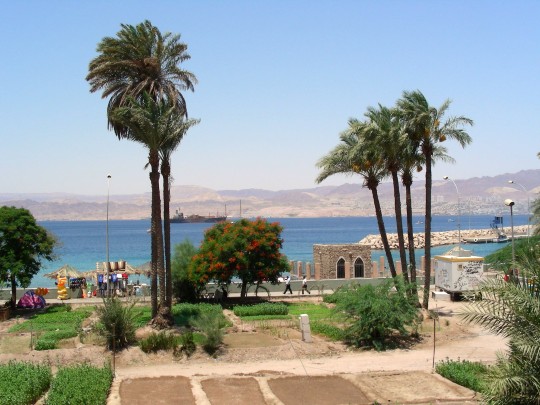

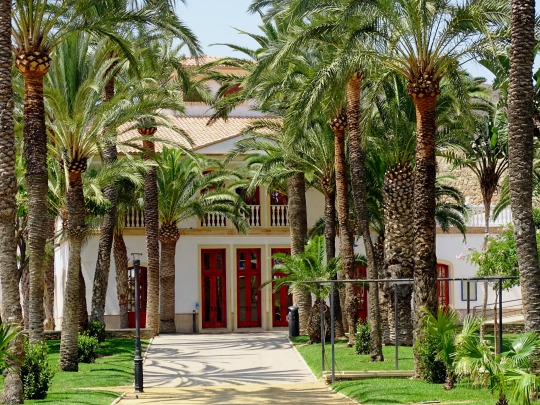


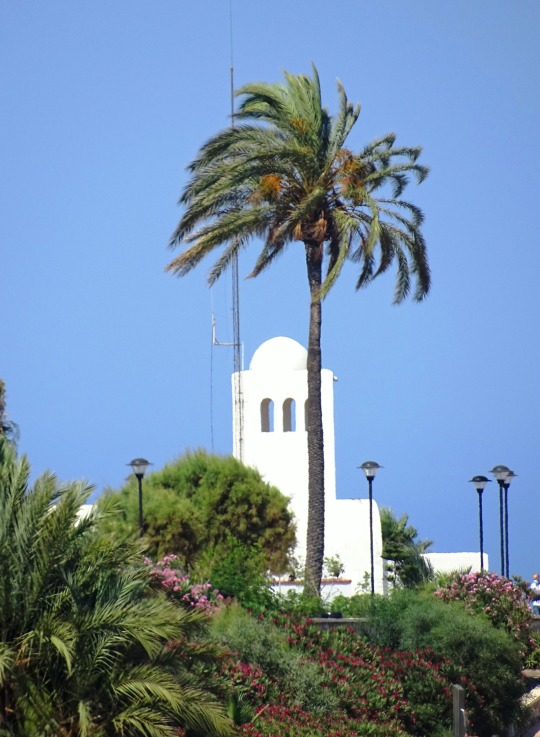

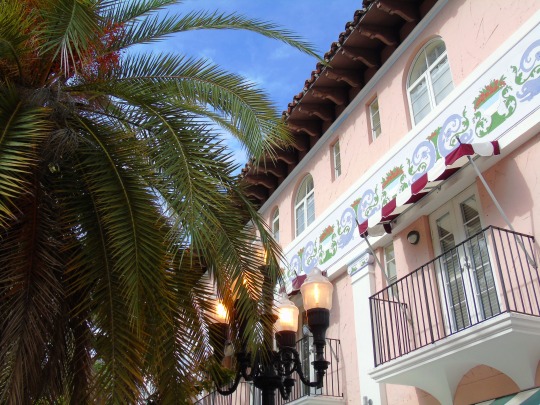
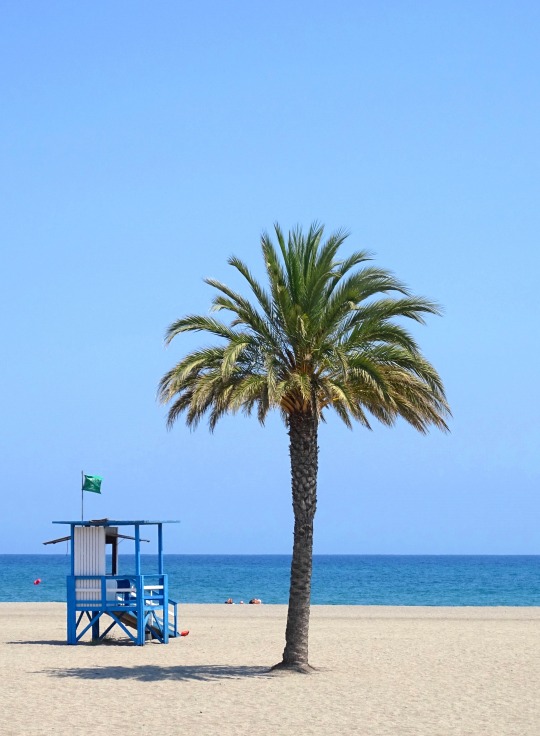
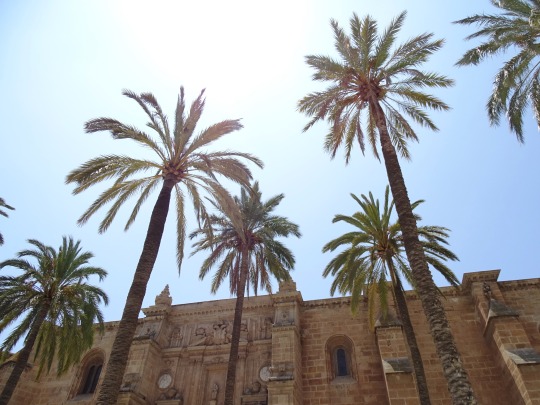



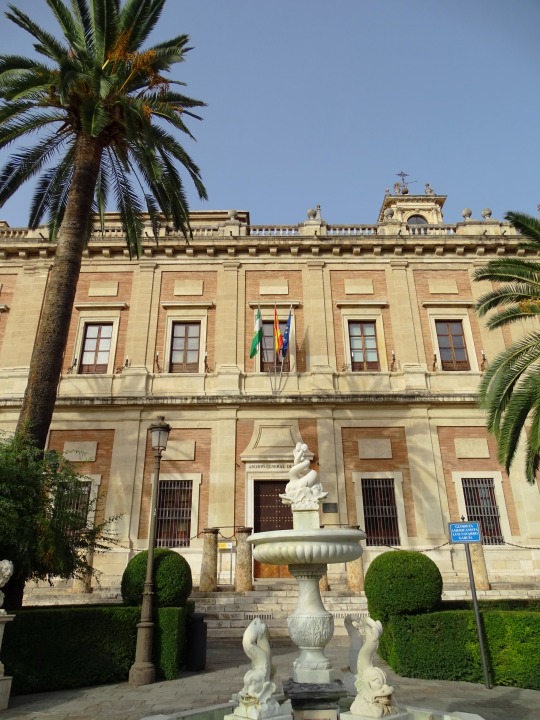



Medjoola Date Day
Medjool Date Day takes place on February 4 yearly and serves the purpose of highlighting the benefits of the Medjool dates. Originally a Middle-Eastern fruit, Medjool dates made their way to the U.S in the 18th century, and since then, they have reigned in the hearts of the people. With a hint of caramel flavor, the dates are sweet, delicious, and one of the healthiest snacks on the market nowadays. They are also great for energy and can do wonders for people who are trying to cut down on the consumption of artificial sugar.
History of Medjoola Date Day
Medjool dates, like many other delicious fruits, have existed in this world for centuries. Though dates can be traced back to around 5000 to 6000 B.C., it took some time to reach different parts of the world. This was only possible with the technological evolution in transport, as the fruit was transported to different regions of the world. The Medjool dates, originally from Morocco, were brought to Nevada in 1927. From there, the plantation grew in abundance. Today, it is one of two date varieties grown in the U.S. And yes – people are really fond of this fruit.
Medjool dates were introduced into America by Walter Swingle in the 20th century. Swingle was assigned by the U.S government to identify some exotic crops around the globe, and after the researcher discovered dates, he transported them to America. During that time, however, not many were familiar with dates. This was, after all, a fruit they hadn’t heard of before. But as globalization happened and different cultures were brought to the forefront, people came to recognize dates for the delicious fruit they are. One of the main events that added to the popularity of dates in America was the annual date festival that started in 1921.
Today, dates are eaten by people of all ages, for their delicious taste as well as the numerous health benefits linked to them. A 2021 study reveals that Medjool dates are a good source of phenolic compounds.
Medjoola Date Day timeline
7000 B.C. The Fruit Delight
The Mehrgarh civilization cultivates dates in the Asian region.
3000 B.C. Reap What You Sow
Dates are grown in Mesopotamia.
2600 - 1900 B.C. Sweet Valley
The Indus Valley Civilization grows and consumes dates.
2019 Going Strong
Nine million tonnes of date fruit are produced.
Medjoola Date Day FAQs
What is the difference between Medjool dates and regular dates?
Medjool dates are more caramel-like in taste than regular dates (also called Deglet Noor).
Do dates make you fat?
Consuming a large number of dates can lead to weight gain.
Are Medjool dates healthier than other dates?
They may be healthier since Medjool dates contain more calcium.
Medjoola Date Day Activities
Buy some Medjool Dates
Share their benefits
Cook a dish
Honor the day by heading out to the store and buying some Medjool dates for yourself and your family. Don’t forget to serve them at the dinner table!
Since Medjool dates are good for health, it's only fair you share their benefits with other people too. Find some good articles and start posting on social media now!
Start the day well by cooking up some yummy date dishes in your kitchen. Some items you can attempt include date biscuits, puddings, and cakes.
5 Fun Facts About Dates
Dates are grown in California
Nickname of Medjool dates
Amount of fiber in dates
A perennial plant
Edibles made from dates
95% of the dates in the United States are grown in California.
It’s known as the ‘king of dates.’
It has 12% of the fiber amount our body needs daily.
The date palm takes four to five years to grow.
This includes syrup, alcohol, and vinegar.
Why We Love Medjoola Date Day
The fruit is highly nutritious
Its potential health benefits
It can be a substitute for sugar
Offering a significant amount of fiber and a variety of vitamins and minerals, Medjool dates are a rich source of healthful nutrients. It also contains more calcium than other common date varieties.
Protection from disease, indigestion, and cell damage are a few of the many health benefits of Medjool dates. And compared to figs and prunes, it has the highest antioxidant content.
Medjool dates are a rich source of natural sugar. The stone fruits are especially good for people monitoring their blood sugar because they have a low glycemic index and do not cause large increases in blood sugar.
Source
#Mamluk Castle#Aqaba Fort#palm tree#date palm#Oropesa del Mar#Aqaba#Jordan#Miami Beach#Florida#Peñíscola#Spain#flora#nature#original photography#Carboneras#Almeria#Sevilla#Lisabon#Lisbon#Portugal#España#Southern Europe#summer 2021#2007#2016#Medjoola Date Day#MedjoolaDateDay#4 February#ruins#travel
0 notes
Photo

Palmyra Castle, Syria,
Also known as Fakhr-al-Din al-Ma'ani Castle or Tadmur Castle,
Built in the 13th century by Mamluks.
#art#design#architecture#castle#fortress#palmyra castle#syria#tadmur castle#mamluk#13th century#style#history#desert#fakhr-al-din
1K notes
·
View notes
Photo








Ajloun Castle ( Qa'lat ar-Rabad ) - Jordan
#ajloun castle#ajloun#islamic castle#islamic architecture#saladyn#Jordan#castle photography#castle in jordan#ajlounjordan#visit jordan#go to jordan#islamic architectur#qal'at#muslim castle#jabal ajlun#ayyubids#mamluks#faubourg#saladin#landscape and architecture photography#photo travel#around the world#travel around the world#travel photo diary#travel to jordan#travel photo blog#travel photography#ancient castle#jordan castles#castle
10 notes
·
View notes
Text


#Palmyra Castle (Tadmur Castle) is thought to have been built by the Mamluks in the 13th century on a high hill overlooking the historic site#Palmyra.
0 notes
Text
Battle of Raab

Belated happy birthday, Eugène!
As I had already talked about Eugène’s birthday present 1809 (his 28th birthday) here, maybe we could have a look at what had happened a couple of weeks earlier, on June 14th. It’s Eugène’s (tiny) share of napoleonic military glory, after all: the battle of Raab. Rarely mentioned, but astonishinghly considered quite important by Napoleon for psychological reasons, even still on Saint Helena. On 9 March 1821, according to Bertrand’s journal, he calls the victory at Raab »the greatest service Prince Eugène ever did him«, because it erased the memory of the recent defeat at Aspern and Essling and »made quite an impression« on friends and foes alike.
As already mentioned several times, Eugène’s start into independent command had been a sound defeat, at Sacile in April 1809. With Napoleon showering him with reproachful letters over the next weeks and droning on about military responsibility, lack of sufficient information for imperial stepfathers and Masséna and Murat being so much better at this job, Eugène removed all obstacles the Austrians had put in his way through the Alps, met with Napoleon in Austria and was sent in pursuit of archduke Johann (Jean, John) into Hungary, where he managed to beat Johann and his brother Joseph, at Raab on June 14. Funnily enough, the two archdukes (or rather their chief-of-staff Nugent) apparently had wanted to give battle on the 15th and … somehow expected that the French would wait that long? In any case, Eugène didn’t, as this was the anniversary of the battle of Marengo and of Friedland, so he considered it a lucky day. His attack surprised the two archdukes and their entourage during their déjeuner and probably annoyed them a lot.
As happy as Napoleon later was about the victory, I guess he actually didn’t want it to be fought. As usual, he tried to command all military operations himself, from the castle of Schönbrunn close to Vienna, so we have an extensive correspondence between him and Eugène. On June 15, one day after the battle had taken place, Napoleon writes:
Your general instruction is to pursue the Archduke John and to do him as much harm as you can without compromising yourself.
Which I take to mean as: Pursue him, chase him off, but don’t do anything dangerous! - Of course, by the time Eugène received the letter, it had become rather pointless, and Eugène had already written one of his own:
From headquarters close to Raab, 14 June 1809.
Sire, I hasten to report to Your Majesty that I gave battle today to Prince John, and that I had the good fortune to win it. It was the anniversary of a day too beautiful for anything to happen to us.
Which is so Eugène. After Sacile, he simply wrote »I lost the battle«, taking full responsibility. Now that he’s won, it’s due to »good fortune« and the anniversary of Marengo. (He does show a little more pride in his letter to his wife though, going as far as to admit that his mamluke Petrus had been wounded in the head by a bullet »while standing behind me – all those little events are over now, so I can tell you about them«. Which, I assume, did not keep Auguste from freaking out when she imagined that bullet passing so close to her precious husband.)
Speaking of the vice-queen: We do know what Napoleon was doing when he learned about the battle of Raab: He was just replying to a letter from Auguste.
Schönbrunn, 15 June 1809
My daughter, I have received your letter of 2 June. I thank you for your words. I was informed of the good conduct you maintained during the affairs in Italy and of the courage you showed. I am very happy about these new claims you have made on my esteem. Eugène is in Hungary, where he is fighting the enemy.
Napol
P.S. At the very moment, I receive the news that Eugène won, on the 14th, anniversary of the battle of Marengo, a victory at Raab in Hungary against the Archduke John and the Archduke Palatine, took from them 3,000 men, several pieces of cannon and four flags.
Girl! Your boy won a battle. - Dumbfounded. Nap.
This was only the first of several letters in which Napoleon, more or less clearly proud, included a remark about this victory. The first – of course - went to Josephine.
Schönbrunn, 16th June 1809
I am sending you a page to announce to you that on the 14th, anniversary of Marengo, Eugène won a battle against the Archduke John and the Archduke Palatine, at Raab, in Hungary, took from them three thousand men, several pieces of cannon, four flags and pursued them very far on the road to Buda. Napoleon
(Just on a sidenote: this seems like a rather cool letter. No greetings, no good wishes, no »entirely yours« or some other polite phrase. It is only a couple of months before Josephine will get the boot, after all. But still: Josephine, Josephine! Our boy won a battle! Who would have thought!)
According to Jean de Bourgoing, there was another letter congratulating king Max of Bavaria for the fact his son-in-law had won a battle, but he did not cite it, so I can’t quote it.
Davout, at the head of 3rd corps, got a much more businesslike letter:
Schönbrunn, 16 June 1809, four hours after midday
My cousin, Prince Eugène's officer who passed by your outposts, who left on the 15th at two o'clock in the afternoon, arrived, and two hours afterwards arrived General Caffarelli, who left on the 14th in the evening. They brought me the report of the battle of the 14th, anniversary of Marengo and Friedland. The day was beautiful; the combined armies of Archduke John and Archduke Palatine were routed. […]
So, Davout, not sure if you’ve heard of it already, but … the boy won a battle! My boy! A real battle, Davout!
(And I can just imagine Monsieur Auerstedt’s reaction: Well, with two sides going into battle, one of them winning tends to happen, indeed…)
And then there’s a letter on 17 June to Jérôme, king of Westphalia, containing the usual mix of reproaches and instructions, but ending:
The attached order of the day will let you know in what way the right wing of my army celebrated the anniversary of Marengo.
And that attached order then sang the praise of Eugène’s Italian army. Which was probably a particularly stinging way of telling Jérôme: You know, the Beauharnais booby you all dislike so much just won me a battle – and you can’t even deal with that one Schill guy!
Of course Napoleon also wrote to Eugène himself. He even almost let himself be carried away a little at first:
Schönbrunn, 16 June 1809, five o'clock in the evening
My son, the officer whom you made leave on the 15th at two hours after midday arrived first; two hours afterwards arrived general Caffarelli. I congratulate you on the battle of Raab, it is a grand-daughter of Marengo and Friedland […]
But of course he would not be Napoleon if he didn’t find a fly in the ointment and immediately take the occasion to play the teacher:
Since you attacked in echelons from the right, why did you not put twenty-five cannon at the head of your echelons? That would have strengthened your attack and intimidated the enemy. The cannon, like all other weapons, must be massed if one wants to obtain an important result.
After a long to-do list he adds:
I enclose a copy of the order of the day. Please convey my satisfaction to the army.
Napoleon
P.S. I have written to the empress and the vice queen.
Which is probably as close to »Well done, I’m kinda proud of you, I guess« as Napoleon would ever utter.
He would do his very best to erase all sentimentalism over the next days by replacing Eugène’s chief-of-staff without even informing Eugène first, arguing that the general who had held that position at Raab had done a very bad job (Eugène immediately spoke up for his subordinate and even received a pension for him), and by continuing with his usual grumbling and nagging – probably just to make sure Eugène didn’t get any ideas about Napoleon letting him out from under his thumb.
An example:
My son, I receive your letter of the 16th, brought to me by the staff officer Fontenilles. I notice two omissions: 1. you do not put the time; 2. you do not mention which of my letters you are replying to.
Just so you know, you’re still not done with your homework, son.
22 notes
·
View notes